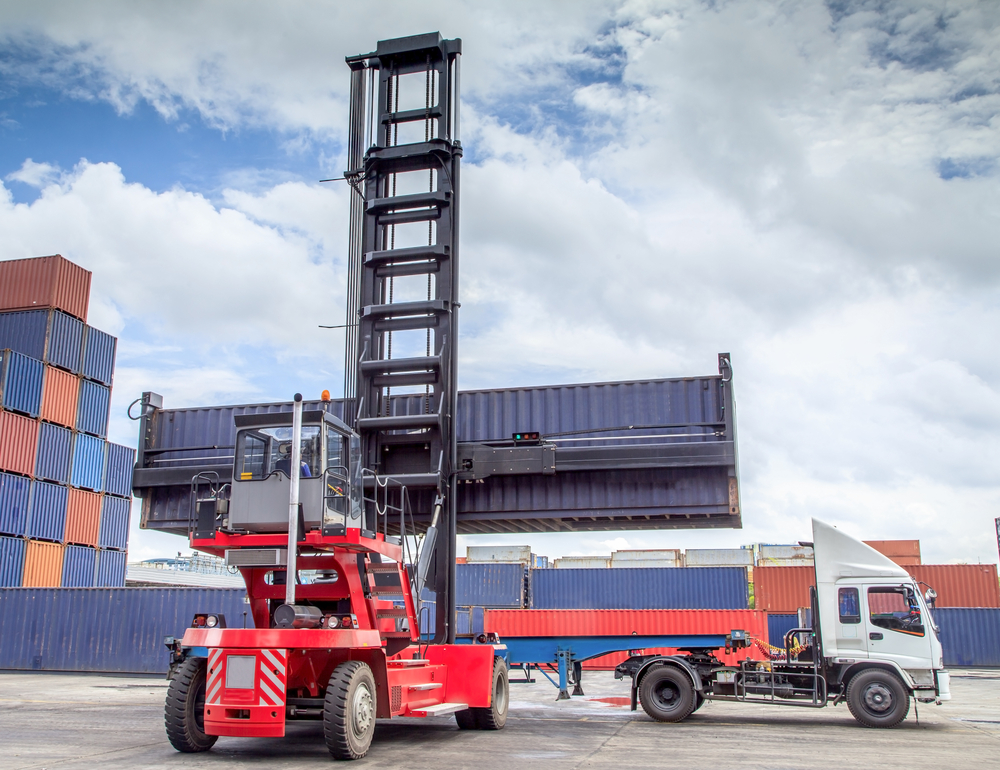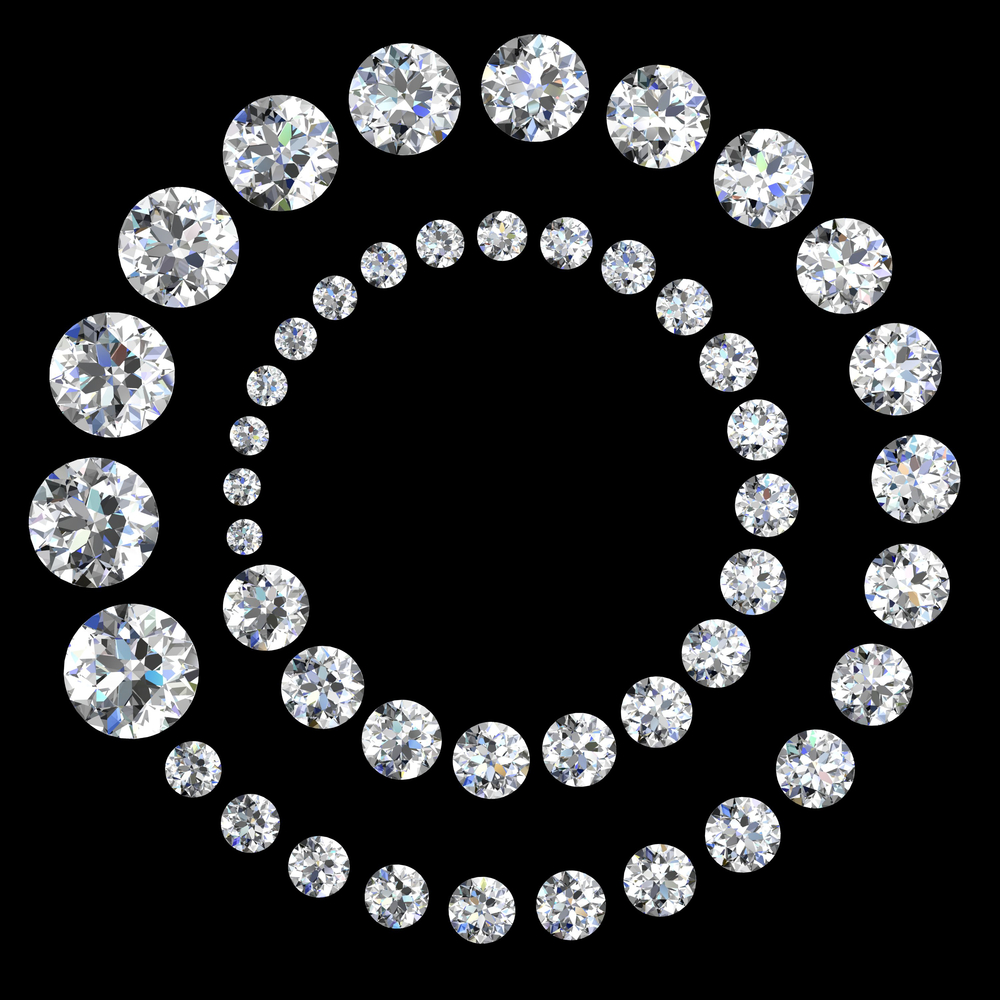Chapter one Material Science & Properties of & testing of metal |
||
| 1.0 | Material Science | 3 – 8
|
| 1.1 | Material Science Definition | 3 |
| (a) | Machinability | |
| (b) | Strength | |
| (c) | Corrosion & resistance durability | |
| (d) | Special metallic features | |
| (e) | Allergic, re-cycling & environmental protection | |
| 1.2 | Chemical element | 4 |
| 1.2.1 | Atom of Elements | 4 |
| 1.2.2 | Atom and solid material | 4 |
| 1.2.3 | The size, mass, charge of an atom, and is particles (Pronton,Nentron and Electron) | 4 – 5 |
| 1.2.4 | Atom Constitutes | 6 |
| 1.2.5 | Periodic Table | 7 |
| 1.2.6 | Atom Bonding | 8 |
| 2.0 | Metal and Alloy | 11 |
| 2.1 | Ferrous & Non Ferrous Metal | 11 |
| 2.2 | Features of Metal | 11 |
| 3.0 | Crystal Pattern | 12 – 15 |
| 3.1 | Crystal structure, Space lattice & Unit cell | 12 |
| 3.2 | X- ray crystal analyics method | 12 |
| 3.3 | Metal space lattice | 12 – 13 |
| 3.4 | Lattice constant | 13 – 15 |
| 4.0 | Mill’s Index | 16 |
| 5.0 | Metal Phase and Phase Rule | 17 |
| 5.1 | Solid solution | 17 |
| 5.2 | Substitutional type solid solution | 17 |
| 5.3 | Interstital solid solution | 17 |
| 6.0 | Intermetallic compound | 18 |
| 7.0 | Transformation | 18 |
| Transformation Point | ||
| Magnetic Transformation | ||
| Allotropic Transformation | ||
| 8.0 | Thermal Equilibrium | 18 |
| 9.0 | Phase Rule | 18 – 19 |
| 9.1 | Degree of freedom | 18 – 19 |
| 9.2 | Critical temperture | 19 |
| 10.0 | Eutectic | 19 |
| Peritectic Temperature | ||
| Peritectic Reaction | ||
| Peritectic Alloy | ||
| Hypoeutetic Alloy | ||
| Hyper-ectectic Alloy | ||
| 11.0 | Equilibrium Comparision | 20 |
| 12.0 | Plastic Deformation | 21 |
| Slip Plan | ||
| Distortion | ||
| Work Hardening | ||
| 13.0 | Annealing | 21 |
| Crystal Recovery | ||
| Recrystallization | ||
| 14.0 | Properties & testing of metal | 25 – 28 |
| 14.1 | Chemical Properties | 25 |
| 14.2 | Physical Properties | 25 |
| (a) | Colour | 25 |
| (b) | Magnetisum | 25 |
| (c) | Specific resistivity & specific resistance | 25 |
| (d) | Specific gravity & specific density | 26 |
| (e) | Specific Heat | 26 |
| (f) | Coefficient of thermal expansion | 26 |
| (g) | Heat conductivity | 27 |
| 14.3 | Mechanical properties | 27 |
| (a) | Yield strangth | 27 |
| (b) | Elastic limit, Yeung’s module of elasticity to yield point | 27 |
| (c) | Elongation | 28 |
| (d) | Reduction of area | 28 |
| 15.0 | The Method of Metal inspection | 29 – 31 |
| 15.1 | Non -destructive inspections | 29 |
| (a) | Penetrate inspection | 29 |
| (b) | Magnetic particle inspection | 29 |
| (c) | Radiographic inspection | 29 |
| (d) | Ultrasonic inspection | 29 |
| (e) | Microscopic inspection | 29 |
| 15.2 | Destructive Inspection | 30 |
| 15.3 | Impact Test | 30 |
| 15.4 | Fatigue Test | 30 |
| 15.5 | Creep Test | 30 – 31 |
| Creeps Strength | ||
| Primary Creep | ||
| Secondary Creep | ||
| Tertiary Creep | ||
| 16.0 | Physical properties of major Metal Elements | 32 – 33 |
| 17.0 | Industrial Standard -Ferrous & Non -ferrous Metal | 34 – 36 |
Chapter two Magnetism |
||
| 18.0 | Magnetic | 40 – 42 |
| 18.1 | General | 40 |
| 18.1.1 | Soft Magnetic | |
| 18.1.2 | Hard Magnetic | |
| 18.2 | Magnetic Field | 40 – 41 |
| 18.3 | Magnetic Induction | 41 |
| 18.4 | Magnetic Permeability | 41 |
| 18.5 | Magnetic Susceptibility (Xm) | 41 – 42 |
| 18.6 | Magnetic Force ,Magnetic Field & Electron | 42 |
| 19.0 | Diamagnetism, Paramagnetic, Ferromagnetism,Antiferromagnetism & Ferrimagnetism | 43 – 45 |
| 19.1 | Diamagnetism | 43 |
| Dipole | ||
| Negative effect | ||
| 19.2 | Paramagnetic | 43 |
| Positive magnetic susceptibility | 43 | |
| 19.3 | Ferromagnetism | 43 |
| Transition element | ||
| Positive energy exchange | ||
| Outer valence electrons | ||
| Chemical bond | ||
| Spontaneous magnetization | ||
| Magnetic domain | ||
| Opposite span | ||
| 19.4 | Comparison of Diamagnetism, Paramagnetic & Ferromagnetism | 44 |
| 19.5 | Antiferromagnetism | 45 |
| 19.6 | Ferrimagnetism | 45 |
| Magnetic moment | ||
| Net magnetic moment | ||
Chapter Three Steel & Special Steel |
||
| 21.0 | Steel | 49 |
| 21.1 | The major element of steel | 49 |
| 21.2 | Classification of Steel according to Carbon contents | 49 |
| 21.3 | Steel Phases | 49 |
| 21.4 | Name of steel | 49 |
| Ferrite | 49 | |
| Cementitle | 49 | |
| Austenite | ||
| 22.0 | Pearlite & Eutectoid | 50 |
| 22.1 | Austenite Carbon Steel | |
| Single Phase Metal | ||
| Eutectoid Transformation | ||
| Pearlite | ||
| 22.2 | Hyppo-Eutectoid | 50 |
| Pro-entectoid ferrite | ||
| 22.3 | Hype-eutectoid | 50 |
| 22.4 | Pearlite | 50 |
| Coarse pearlite | ||
| Medium pearlite | ||
| Fine pearlite | ||
| 22.5 |
Magnetic Transformation |
50 |
| 23.0 | Manufacturing of Steel | 51 |
| Continuous casting process | ||
| Electric furnace | ||
| Soaking pit | ||
| Killed steel | ||
| Semi-killed steel | ||
| Rimmed steel | ||
| 24.0 | Steel Production Flow Chart | 52 |
| 25.0 | The Casting, Fogging, Extrusion, Rolling & Steel | 53 |
| (a) | Casting | |
| (b) | Fogging | |
| (c) | Extrusion | |
| (d) | Rolling | |
| (e) | Drawing & stamping | |
| 26.0 | Special Steel | 57 – 60 |
| 26.1 | General | 57 |
| 26.2 | Classification of Special Steel according to Element | 57 |
| 26.3 | Classification of Special Steel according to End Usage | 58 |
| 26.4 | Free Cutting Stainless Steel | 59 |
| 26.5 | Leaded Free Culting Steel | 59 |
| 26.6 | Sulphuric Free Culting Steel | 59 |
| 26.7 | Hardenability | 59 – 60 |
| 27.0 | Brittleness of Steel | 60 |
| 27.1 | Cold brittleness | 60 |
| 27.2 | Temper brittleness | 60 |
| 28.0 | Specail Steel according to JIS Standard | 61 – 65 |
| 28.1 | Chrome steel to JIS G4104 | 61 |
| 28.2 | Chrome Molybdenum steel to JIS G4105 | |
| 28.3 | Chrome Nickel steel to JIS G4102 | |
| 28.4 | Nickel, Chrome & Molybdenum Steel to JIS G4103 | |
| 28.5 | High manganese steel to JIS standard | 65 |
| Chapter Four-Strip, Steel & Plate | ||
| Chapter Four-Strip, Steel & Plate | ||
| 31.0 | Cold Rolled (Low carbon) Steel Strip (to JIS G 3141) | 73 |
| 31.1 | General | |
| 31.2 | Cold Rolled Steel Strip American Standard – American Society for testing and materials (ASTM) | 73 |
| 31.3 | Decoding of cold rolled(Low carbon)steel strip JIS G3141 | 74 |
| 31.3.1 | Drawing abillity | 74 |
| 31.3.2 | Hardness | 75 |
| 31.3.3 | Surface finish | 75 |
| 31.4 | Production flow chart cold rolled steel coil sheet | 76 – 77 |
| 31.5 | Cold rolled steel coil & sheet electro-plating & painting method | 78 |
| 31.6 | End usages, industrial standard, quality, condition and hardness of cold rolled steel strip | 79 |
| 31.7 | Hardness & Tensile strength test | 81 |
| 31.8 | Elongation test | 81 |
| 31.9 | Erichsen test (Thickness: 0.4mm to 1.6mm, figure round up to 0.1mm) | 82 |
| 31.10 | Camber | 82 |
| 31.11 | Tolerance on Thickness & Width | 82 |
| 31.12 | Flatness (width>500mm, temper: standard) | 83 |
| 31.13 | Camber | 83 |
| 31.14 | General advice on handling & storage of cold rolled steel coil & sheet | 84 |
| 31.14.1 | Rust Protection | 84 |
| 31.14.2 | Speed of rusting | 84 |
| 31.14.3 | Welding | 85 |
| Gas Welding | ||
| Submerged-arc Welding | ||
| Resistance Welding | ||
| 31.15 | Spot welding conditions for bared (free from paint, oxides etc) Cold rolled mild steel sheets(T/S:30-32 Kgf/ £g m2) | 86 |
| 31.16 | Aging & Stretcher Strains | 87 |
| 31.17 | Chemical composition -cold rolled steel sheet to JIS G3141 | 88 |
| 31.18 | Cold Rolled Steel Sheet -Theoretical mass | 89 |
| 31.19 | Mass of Cold-Rolled Steel Sheet to JIS G3141 | 90 |
| 31.20 | Ordering of cold rolled steel strip/sheet | 92 – 93 |
| 31.21 | JIS standard & application of other cold Rolled Special Steel | 95 |
| 32.0 | Electro-galvanized Steel Sheet/Electrolytic Zinc Coated Steel Sheet | 101 – 114 |
| 32.1 | General | 101 |
| 32.2 | Galvanic Action improving Weather & Corrosion Resistance of the Base Steel Sheet | 101 |
| 32.3 | Paint Adhesion | 101 |
| 32.4 | Welding of Electro-galvanized steel sheet | 102 |
| 32.5 | Spot welding | 102 |
| 32.6 | Seam welding | 103 |
| 32.7 | Electro-galvanized Steel Sheet | 105 |
| Production Flow Chart | ||
| 32.8 | Base metal, application, JIS & ASTM standard, and Normal thickness of galvanized steel sheet | 106 – 107 |
| 32.9 | Zinc Coating Mass | 108 |
| 32.10 | Surface Treatment | 109 |
| 32.11 | Cold-Rolled Steel Sheet/Strip | 110 |
| 32.12 | Hot-Rolled Sheet/Strip | 111 |
| 32.13 | Thickness Tolerance of Electrolytic Cold-rolled sheet | 112 |
| 32.14 | Thickness Tolerance of Hot-rolled sheet | 113 |
| 32.15 | Width Tolerance of Cold or Hot-rolled sheet | 113 |
| 32.16 | Length Tolerance | 113 |
| 32.17 | Theoretical Mass | 114 |
| 32.18 | Mass Calculation of coating (For equal coating)/MM | 114 |
| 32.19 | Mass Calculation of coating (For differential coating)/MM | 114 |
| 33.0 | Electrolytic Tinplate (JIS G3303) | 119 – 125 |
| 33.1 | General | 119 |
| 33.2 | Construction of Electrolytic Tinplate | 119 |
| 33.3 | Production Process of Electrolytic Tinplate | 120 |
| 33.4 | Mass of Tin Coating (JIS G3303-1987) | 121 |
| 33.4.1 | Both Side Equally Coated Mass | 121 |
| 33.4.2 | Both Side Different Thickness Coated Mass | 121 |
| 33.5 | Grade, Coating type, Designation of Plating Mass & Common Coating Mass | 121 |
| 33.6 | Markings & Designations of Differential Coatings | 122 |
| 33.7 | Hardness | 122 |
| 33.7.1 | Single-Reduced Tinplate | 122 |
| 33.8 | Dual-Reduction Tinplate | 123 |
| 33.9 | Type of Steel | 123 |
| 33.10 | Surface Finish | 124 |
| 33.11 | Commonly Used Size | 125 |
| 34.0 | Electrical Steel Sheet | 131 – 148 |
| 34.1 | General | 132 – 133 |
| 34.1.1 | Soft Magnetic Material | 132 |
| 34.1.2 | Narrow Hystersis | 132 |
| 34.1.3 | Coercive Force | 132 |
| 34.1.4 | Hard Magnetic Material | 132 |
| 34.1.5 | Maximum Energy Product | 133 |
| 34.1.6 | The Advantage of Using Silicon low Carbon Steel | 133 |
| 34.1.7 | Grain-Oriented ,Non-Oriented | 133 |
| 34.2 | End Usage and Designations of Electrical Steel Strip | 134 |
| 34.3 | Classification of Silicon Steel Sheet for Electrical Use | 135 |
| 34.4 | Performance of Surface Insulation of Electrical Steel Sheets | 136 |
| 34.5 | International Standard -Grain-Oriented Electrical Steel Silicon Steel Sheet for Electrical Use | 137 |
| 34.5.1 | Grain-Oriented Electrical Steel | 137 |
| 34.6 | Magnetic Properties and Lamination Factor of SI-ORIENT-CORE& SI-ORIENT-CORE-HI B Electrical Steel Strip (JIS and AISI Standard) | 138 – 139 |
| 34.7 | Annealing | 140 |
| 34.7.1 | Annealing of the Electrical Steel Sheet | 140 |
| 34.7.2 | Annealing Precautionary | 140 |
| (a) | Prevent Carbon Contamination | 141 |
| (b) | Heat from the Laminated Stacks Edges | 141 |
| (c) | No Excessive Oxidation | 141 |
| (d) | Stress -relieving Annealing Temperature | 141 |
| 34.8 | Mechanical Properties and Lamination Factors of SI-ORIENT-CORE-HI-B and SI-ORIENT-CORE Grain Orient Electrical Steel Sheets | 142 |
| 34.9 | Magnetic and Electrical Properties of SI-ORIENT-CORE-HI-B-LS | 142 |
| 34.10 | Mechanical Properties and Lamination Factors of SI-ORIENT-CORE-HI-B-LS | 143 |
| 34.11 | Physical Tolerance of SI-ORIENT-CORE-HI-B, SI-ORIENT-CORE, & SI-CORE-HI-B-LS Grain Oriented Electrical Steel Sheets |
144 |
| 34.12 | Standard Forms and Size of SI-ORIENT-CORE-HI-B,SI-CORE, & SI-ORIENT-CORE-HI-B-LS Grain- Oriented Electrical Steel Sheets |
145 |
| 34.13 | Surface Insulation | 145 |
| 34.14 | Lamination Factors of Electrical, Magnetic & Mechanical Non-Grain Oriented Electrical | 146 |
| 34.15 | Coated (Low Carbon) Steel Sheets for Casing,Electricals & Home Appliances | 147 – 148 |
| 35.0 | Aluminized Silicon Alloy Steel Sheet | 153 – 159 |
| 35.1 | General | 153 |
| 35.2 | Feature of Aluminized Silicon Alloy Steel Sheet | 153 |
| 35.3 | End Usages | 153 |
| 35.4 | Chemical Resistance | 153 |
| 35.5 | Hot-aluminum-coated sheets and coils to JIS G 3314 | 154 |
| 35.6 | Mechanical Properties of JIS G 3314 Hot-Dip Aluminum-coated Sheets and Coils | 154 |
| 35.8 | Size Tolerance | 155 |
| 35.9 | Comparsion of various resistance of aluminized steel & other kinds of steel | 156 |
| 35.10 | Aluminum Steel Sheet, Production Flow Chart | 157 |
| 35.11 | Weldability | 158 |
| 35.12 | Tips on welding of Aluminized sheet in comparasion with cold rolled steel strip | 159 |
| 36.0 | Steel Plate | 165 |
| 36.1 |
Type of steel Plate & Related JIS, ASTM and Other Major Industrial Standards |
166 – 168 |
| 36.2 | Production Flow Chart | 169 |
| 36.3 | Ordering of Steel Plate | 170 – 171 |
| 37.0 | Stainless Steel | 175 – 203 |
| 37.1 | Definition of Stainless Steel | 175 |
| 37.2 | Classification, Corrosion Resistant & Heat Resistance of Stainless Steel | 176 |
| 37.2.1 | Chrome Stainless Steel | 176 |
| A) | Martensite Stainless Steel | |
| B) | Low Carbon Martensite Stainless Steel | |
| C) | Ferrite Stainless Steel | |
| 37.2.2 | Nickel Chrome Stainless Steel | 177 |
| 37.2.3 | Precipitation Hardening Stainless Steel | |
| 37.2.4 | Fe / Mn / Al / Stainless Steel | |
| 37.3 | Magnetic Property & Stainless Steel | 178 |
| 37.4 | Classification of Foil, Strip, Sheet & Plate by Thickness | 179 |
| 37.5 | Surface protection film | 180 |
| 37.6 | Designation of SUS Steel Special Use Stainless | 181 |
| 37.7 | Surface finish | 182 – 183 |
| 37.8 | Mechanical Properties of Thin Stainless Steel(Thickness from 0.3mm to 2.9mm) – strip/sheet | 184 |
| 37.9 | Mechanical Properties of Spring use Stainless Steel | 185 |
| 37.10 | Stainless Steel -Type, Industrial Standard, Chemical Composition, Characteristic & end usage of the most commonly used Stainless Steel | 186 – 194 |
| 37.11.1 | End Usage of Thinner Gauge | 195 |
| 37.11.2 | Examples of End Usages of Strip, Sheet & Plate | 196 |
| 37.12 | General Specification of Tension Annealed Stainless Steel Strips | 197 – 198 |
| 37.13 | Heat-Resistance Stainless Steel | 199 |
| 37.13.1 | Heat-Resistance Stainless Steel | 199 |
| 37.13.2 | Chrome Heat Resistance Steel | 200 |
| 37.13.3 | Ni – Cr Heat Resistance Steel | 200 |
| 37.13.4 | Special Heat Resistance Steel | 200 |
| 37.13.5 | Heat Resistance Super Alloy | 200 |
| 37.13.6 | Specific Gravity of Heat -resistance steel plates and sheets stainless steel | 201 |
| 37.14 | Stainless and Heat-Resisting Steels | 202 – 203 |
| 38.0 | Power Spring Strip | 205 – 212 |
| 38.1 | Power Spring Strip Classification and Materials | 205 |
| 38.2.1 | Wind-up Spring | |
| 38.2.2 | Pull Back Power Spring | 206 |
| 38.2.3 | Convex Spring Strip | 206 |
| 38.2.4 | Measure Tape | 206 |
| 38.2.5 | Magic Tape | 206 |
| 38.2.6 | Drawing of Magic Tap | 207 |
| 38.3 | Constant Torque Spring | 207 |
| 38.4 | Spring Force of Constant Torque Spring and Wing-up SpringO | 207 |
| 38.5 | Shape and Spring Back of Constant Torque Spring | 208 |
| 38.6 | The Formula and Symbol of Constant Torque Spring | 208 – 209 |
| 38.7 | Edge Finish | 210 |
| 38.8 | Hardness | 210 |
| 38.9 | High Carbon Tool Steel, Chemical Composition and Usage | 211 |
| 38.10 | The Length of 1 Kg of Spring Steel Strip | 211 |
| 38.11 | Weight per one meter long (kg) (Width 100-200mm) | 212 |
| 38.12 | Length per one kg (Width 100-200mm) | 212 |
| 38.13 | Weight per one meter long (kg) (Width 2.0-10mm) | 212 |
| 38.14 | Length per one kg (Width 2.0-10mm) | 212 |
| 39.0 | High Carbon Steel Strip | 214 – 222 |
| 39.1 | Classification | 214 |
| 39.1.1 | Classification According to Grain Structure | 214 |
| 39.1.2 | Classification According to Carbon Contains | 214 |
| 39.2 | CarbonSteel Strip For Spring Use | 215 |
| 39.2.1 | Cold Rolled Strip | 215 |
| 39.2.2 | Annealed Strip | 215 |
| 39.2.3 | Hardened & Tempered Strip/ Precision -Quenched Steel Strip | 215 |
| 39.2.4 | Bainite Steel Strip | 215 |
| 39.3 | Edge Finished | 216 |
| 39.4 | Quenching Media | 216 |
| 39.5 | Tempering | 217 |
| 39.5.1 | Low & High Temperature Tempering | 217 |
| 39.5.2 | High Temperature Tempering | 217 |
| 39.6 | Annealing | 218 |
| 39.6.1 | Full Annealing | 218 |
| 39.6.2 | Diffusion Annealing | 218 |
| 39.6.3 | Low Temperature Annealing | 218 |
| 39.6.4 | Process Annealing | 218 |
| 39.6.5 | Spheroidizing Annealing | 218 |
| 39.6.6 | Bright Annealing | 218 |
| 39.7 | Quenching | 219 |
| 39.7.1 | Time Quenching | 219 |
| 39.7.2 | Austempering | 220 |
| 39.7.3 | Marquenching | 220 |
| 39.7.4 | End Usage of High Carbon Steel Strip | 220 |
| 39.8 | Cold-Rolled (Special Steel) Carbon Steel Strip to JIS G3311 | 221 – 222 |
| 40.0 | Plate Metal Strip | 223 – 225 |
| 40.1 | General | 223 |
| 40.2 | Advantage of Using Plate Metal Strip | 223 |
| 40.3 | Plated Layer of Plated Metal Strip | 224 |
| 40.3.1 | Nickel Plated | 224 |
| 40.3.2 | Chrome Plated | 224 |
| 40.3.3 | Brass Plated | 224 |
| 40.4 | Base Metal of Plated Metal Strip | 225 |
| 40.4.1 | Iron & Low Carbon as Base Metal | 225 |
| 40.4.2 | Stainless Steel as Base Metal | 225 |
| 40.4.3 | Copper as Base Metal | 225 |
| 40.4.4 | Brass as Base Metal | 225 |
| 41.0 | Bearing Alloy | 226 – 227 |
| 41.1 | General | 226 |
| 41.2 | Bearing Alloy to JIS H 5401 | 226 |
| 41.3 | Comparison of Tin base, Lead base and Zinc base alloy for Bearing purpose | 227 |
| 42.0 | Fusible Alloy | 228 |
| 43.0 | Soldering and Brazing Alloy | 229 |
| 43.1 | Soldering Alloy | 229 |
| 43.2 | Soldering Alloy to JIS H 4341 | 229 |
| 43.3 | Brazing Alloy | 229 |
| 44.0 | Other Soldering Material | 229 |
Chapter Five Wire, Rod & Bar |
||
| 45.0 | Classification and End Products of Wire/Rod | 232 – 234 |
| 45.1 | Low Carbon Steel Wires ( Iron Wire ) to JIS G 3532 | 235 |
| 45.1.1 | Ordinary Low Carbon Steel Wire, Annealed Low Carbon Steel Wire Galvanized low Carbon Steel Wire & Low Carbon Steel Wire for nail manufacturing – classification, Symbol of Grade, Tolerance and Remarks. | 235 |
| 45.1.2 | Mechanical Properites | 236 |
| 45.1.3 | Weight of Zinc-Coating, Number of Dippings in Cupric Sulphate Test and Diameters of Mandrel Used for Coiling Test | 237 |
| 46.0 | Carbon Steel Wire Rods for Cold Heading & Cold Forging (to JIS G3507) | 238 – 239 |
| 46.1 | Classification, Symbol of Grade and Chemical Composition | 238 |
| 46.2 | Diameter Tolerance, Ovality and Average Decarburized Layer Depth | 239 |
| 47.0 | Cold Drawn Carbon Steel Shafting Bar | 240 – 242 |
| 47.1 | AISI, JIS End Usage and Chemical Composition of Cold Drawn Carbon Steel Shafting Bar | 240 – 241 |
| 47.2 | Cold Drawn Steel Bar Weight Table | 242 |
| 48.0 | High Carbon Steel Wire Rod (to JIS G3506) |
243 |
| 49.0 | Hard Drawn High Carbon Steel Wire (to JIS G3521, ISO-84580-1&2) |
245 – 246 |
| 49.1 | Chemical Analysis of Wire Rod | 245 |
| 49.2 | Mechanical Properties (JIS G3521) | 246 |
| 50.0 | Piano Wires ( to G3522) | 247 – 266 |
| 50.1 | Classes, symbols, twisting characteristic and applied Wire Diameters | 247 |
| 50.2 | Diameter, Tolerance and Tensile Strength | 248 |
| 50.3 | Permissible depth of flaw and decarburized layer | 249 |
| 51.1 | Stainless Spring Wire – National Standard number, Charateristic, Surface finish & Chemical composition | 250 – 251 |
| 51.2 | Stainless Spring Steel, Wire diameter and Tensile strength of Spring Wire | 252 – 253 |
| 51.3 | Finish & Surface | 254 |
| 51.4 | Tensile Strength of various kinds of Stainless Steel Wire under Different Finish | 255 – 256 |
| 51.5 | Tolerance of Wire Diameters & Ovality | 257 |
| 51.6 | Chromium -Nickel Stainless and Heat-resisting Steel Spring Wire -ASTM A313 -1987 | 258 |
| 51.6.1 | Chemical Composition | 258 |
| 51.6.2 | Mechanical Properties | 259 – 260 |
| 51.7 | Tensile Strength Requirements for Types 305, 316, 321 and 347 | 261 |
| 51.8 | Tensile Strength of A1S1- 302 Wire | 262 |
| 51.9 | JIS -Chemical Composition of Stainless Steel (in order of number & alphabet) | 263 – 264 |
| 51.10 | AISI -Chemical Composition of Stainless Steel & Heat-Resistant Steel(in order of number & alphabet) | 265 – 266 |
| 52.0 | Free Cutting Carbon Steels (to JIS G4804 ) | 267 – 272 |
| 52.1 | Chemical composition | 267 |
| 52.2 | Tolerance on Shape and Dimensions for Round Steel Bar, Square Steel Bar, Hexagonal Steel Bar | 268 |
| 53.1 | Free Cutting Stainless Steel | 269 |
| 53.2 | Type of steel | 270 |
| 53.3 | Tensile Strength of Free Cutting Wires | 271 |
| 53.4 | Rod/Bar Centreless Grind Tolerance (£g) (£g = 1/100 mm) | 272 |
| 53.5 | Hardness of Different Types & Size of Free Cutting Steel | 272 |
| 54.0 | Flat Wire, Half Round Wire, Shaped Wire and Precision Shaped Fine Wire | 273 – 275 |
| 54.1 | Manufacturing Method | 273 |
| 54.2 | Material Used | 273 |
| 54.3 | Characteristic | 273 |
| 54.4 | End Usages | 274 |
| 54.5 | Commonly used materials for Stainless Flat Wire & Half Round Wire | 274 |
| 54.6 | Flat Wire Tolerance | 275 |
| 54.7 | Square Wire Tolerance | 275 |










得利環球

金屬貿易服務

高科技物料服務



